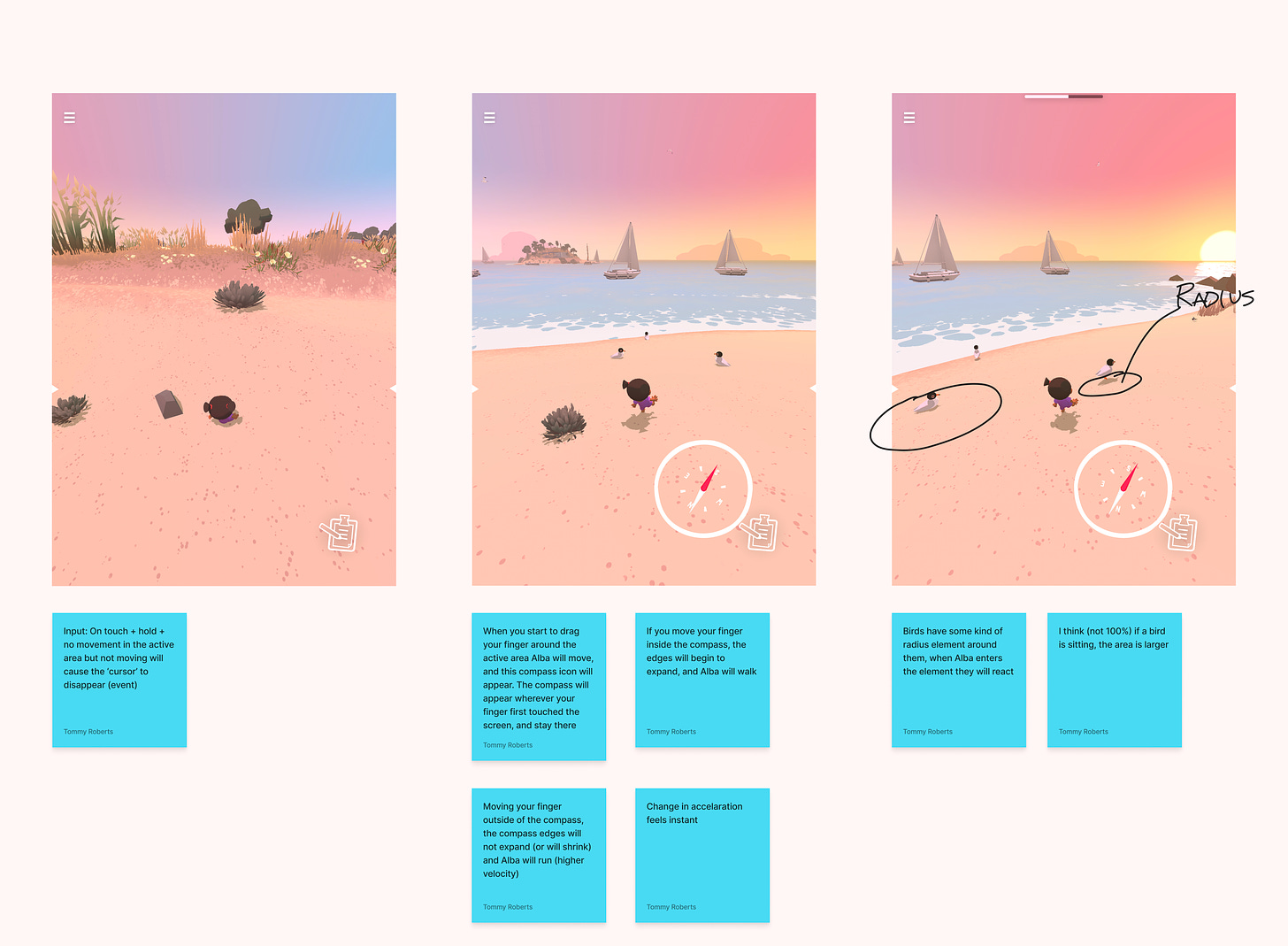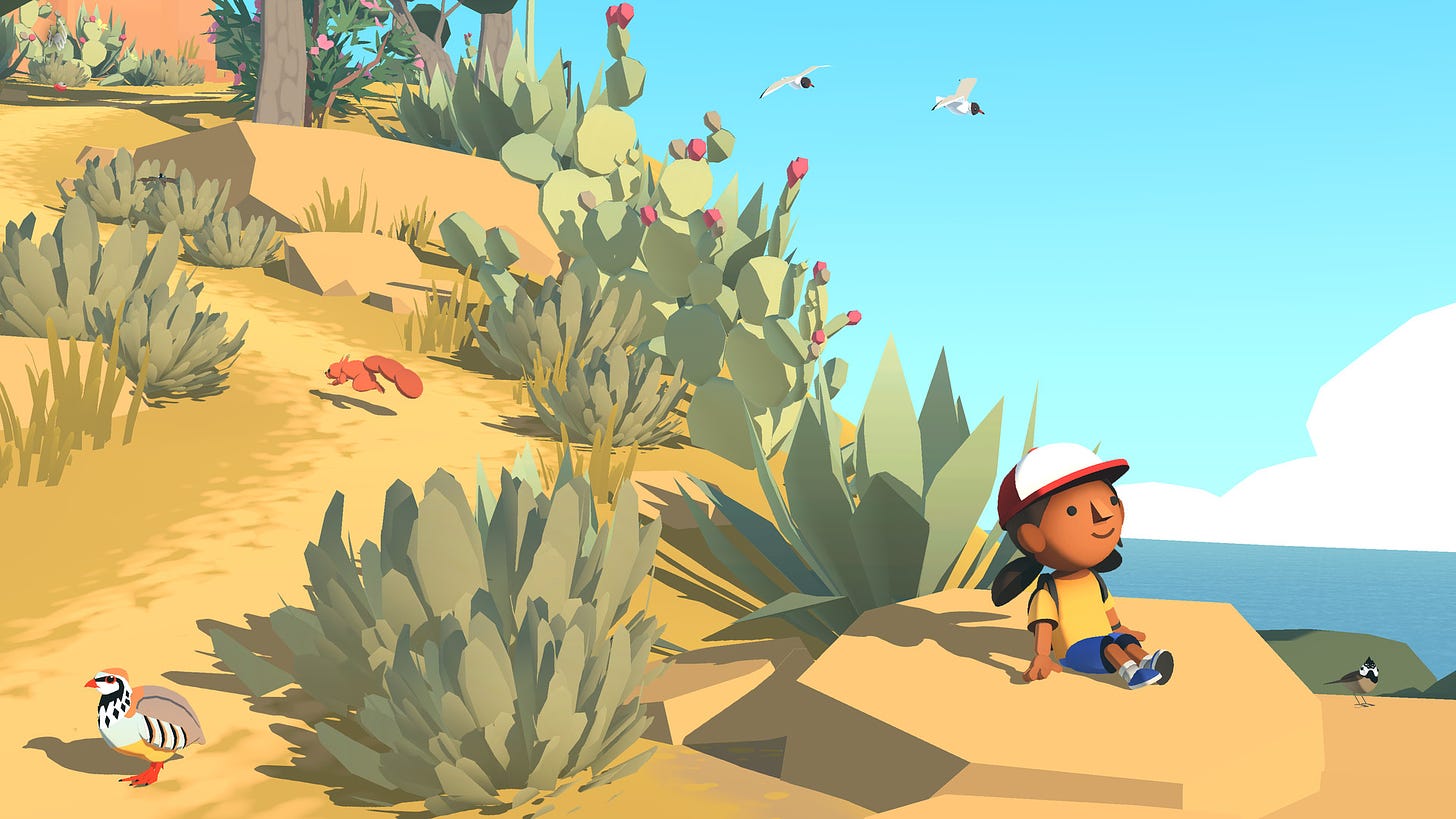Earlier this year, I took a class led by Julius (@tarngerine) called Computing 4 Designers, where techno-curious designers learn to build their technical intuition - the classes were incredibly insightful. I recommend keeping up with Julius on Twitter and YouTube for their insights into design and computing and their breakdowns of the work they're currently doing.
Our first homework assignment was to deconstruct an existing interaction of our choice so we could start to appreciate how many variables are present in interactions that seem simple or familiar. I chose a small moment in Ustwo's Alba: A Wildlife Adventure, where the player could approach a seagull, and the seagull(s) would flee.
Here's a link to my homework if you want to see the whole thing. I'll give you a short run down here.
First, we have the player's character Alba Singh, her default state contains some light animation, and after five or six seconds of inactivity, Alba will plonk down into the dirt.
Directing Alba to run towards a gull will cause it to fly away. When digging into these events, I noticed that if a gull is left alone, it will sometimes sit. When a gull is resting, the area which triggers the fleeing event grows more extensive, which is a nice touch.
If Alba is walking, the gulls will match her speed and walk away from her instead of flying. The gulls also seem to have a random direction of flight.
There is quite a bit going on for such a seemingly simple and familiar event.
Digging into this interaction made me think of how often birds flocking is used as a device to link the player to their environment.
Google' startled birds in video games, and you'll find multiple tutorials explaining how to add this to your own game.
Some research uncovered an interesting article from svg.com, discussing a theory that seeing birds flocking could be a means of spotting otherwise hidden enemy players in Warzone. Others said this was a coincidence; one user experienced a flock of birds flying off in a game with just gas and no players, noting that perhaps any incoming object could set off the event.
Moments like this can set the mood, convey contexts, and develop a sense of immersion. As designers, we carefully curate these player or user interactions because they construct immersive environments.
Other product based examples were called on in lectures, such as gestures on the iPad. You should take some time to break down your own interactions, and check out this video Julius made where they break down an Apple Pay microinteraction.
The result of this exercise is that I was more cognisant of what I asked engineers on my team to do and how to describe details more effectively without creating time-consuming deliverables.
It also broadened my creativity. Now I take to more time to consider where small well made interactions can improve usability or promote efficiency.






